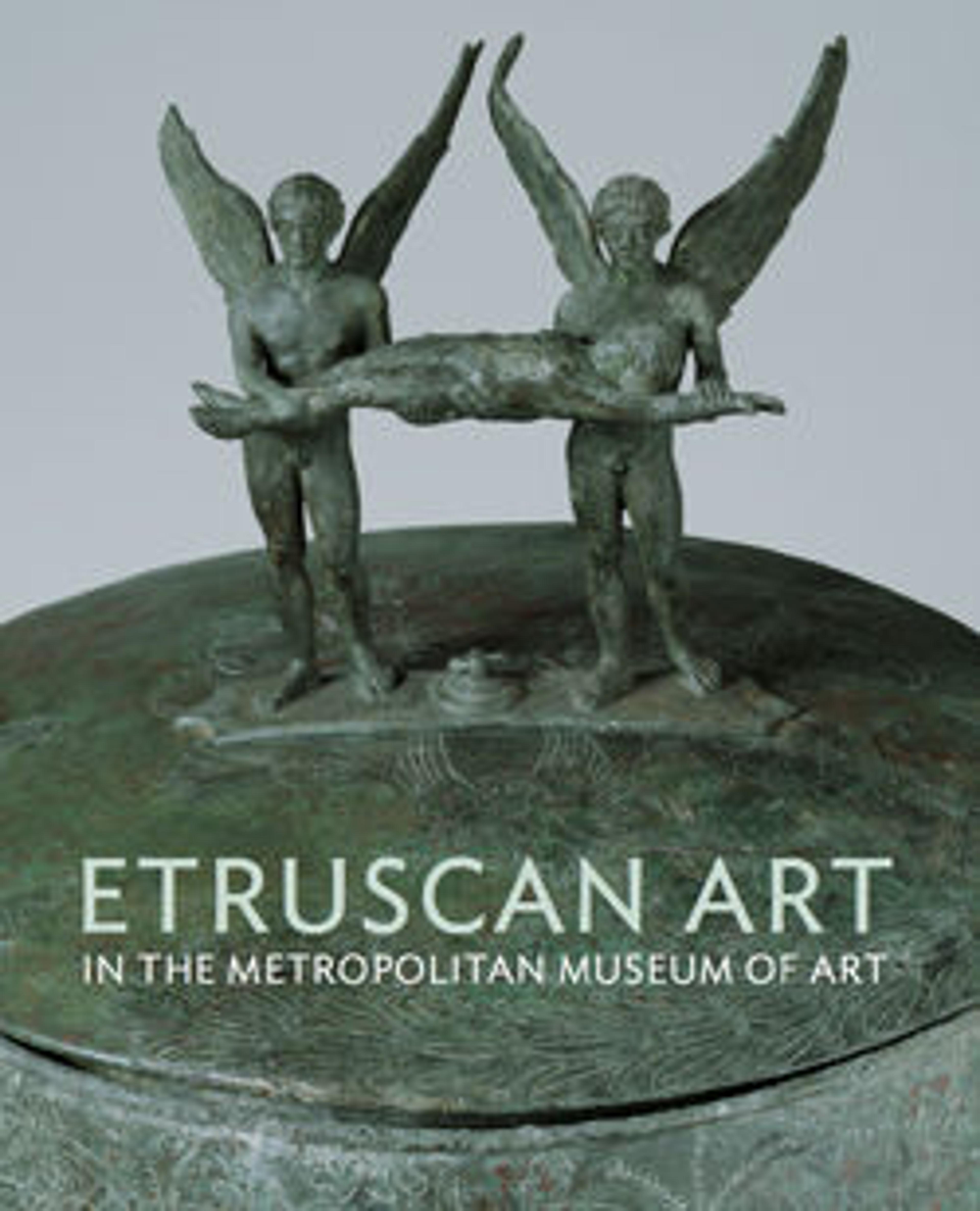Bronze mirror
Peleus, Thetis, and Galene
Pele (Greek: Peleus) surprises his bride, Thethis (Greek: Thetis), who is assisted by the nereid Calaina (Greek: Galene) as she gazes into a mirror. Between Peleus and Thetis, who later became the parents of Achilles, is an engraved toiletries box with lid ajar to reveal various toilet items, including a perfume applicator and two perfume vases. The superb quality of the engraving has assured this mirror's fame.
Pele (Greek: Peleus) surprises his bride, Thethis (Greek: Thetis), who is assisted by the nereid Calaina (Greek: Galene) as she gazes into a mirror. Between Peleus and Thetis, who later became the parents of Achilles, is an engraved toiletries box with lid ajar to reveal various toilet items, including a perfume applicator and two perfume vases. The superb quality of the engraving has assured this mirror's fame.
Artwork Details
- Title: Bronze mirror
- Period: Late Classical
- Date: ca. 350 BCE
- Culture: Etruscan
- Medium: Bronze
- Dimensions: diameter 6 3/8in. (16.2cm)
- Classification: Bronzes
- Credit Line: Rogers Fund, 1909
- Object Number: 09.221.16
- Curatorial Department: Greek and Roman Art
Audio
1217. Bronze Mirror
0:00
0:00
We're sorry, the transcript for this audio track is not available at this time. Please email info@metmuseum.org to request a transcript for this track.
More Artwork
Research Resources
The Met provides unparalleled resources for research and welcomes an international community of students and scholars. The Met's Open Access API is where creators and researchers can connect to the The Met collection. Open Access data and public domain images are available for unrestricted commercial and noncommercial use without permission or fee.
To request images under copyright and other restrictions, please use this Image Request form.
Feedback
We continue to research and examine historical and cultural context for objects in The Met collection. If you have comments or questions about this object record, please contact us using the form below. The Museum looks forward to receiving your comments.
